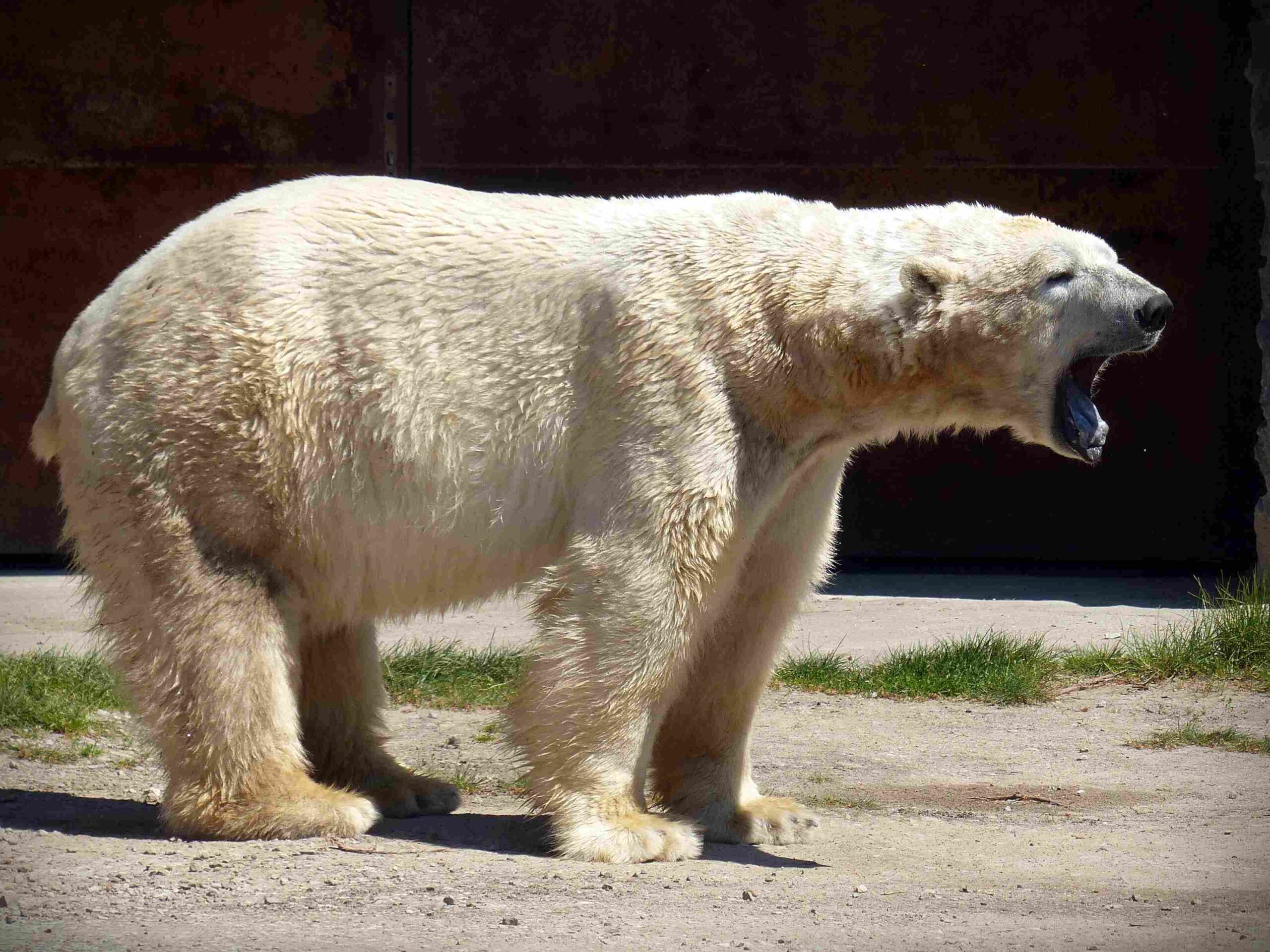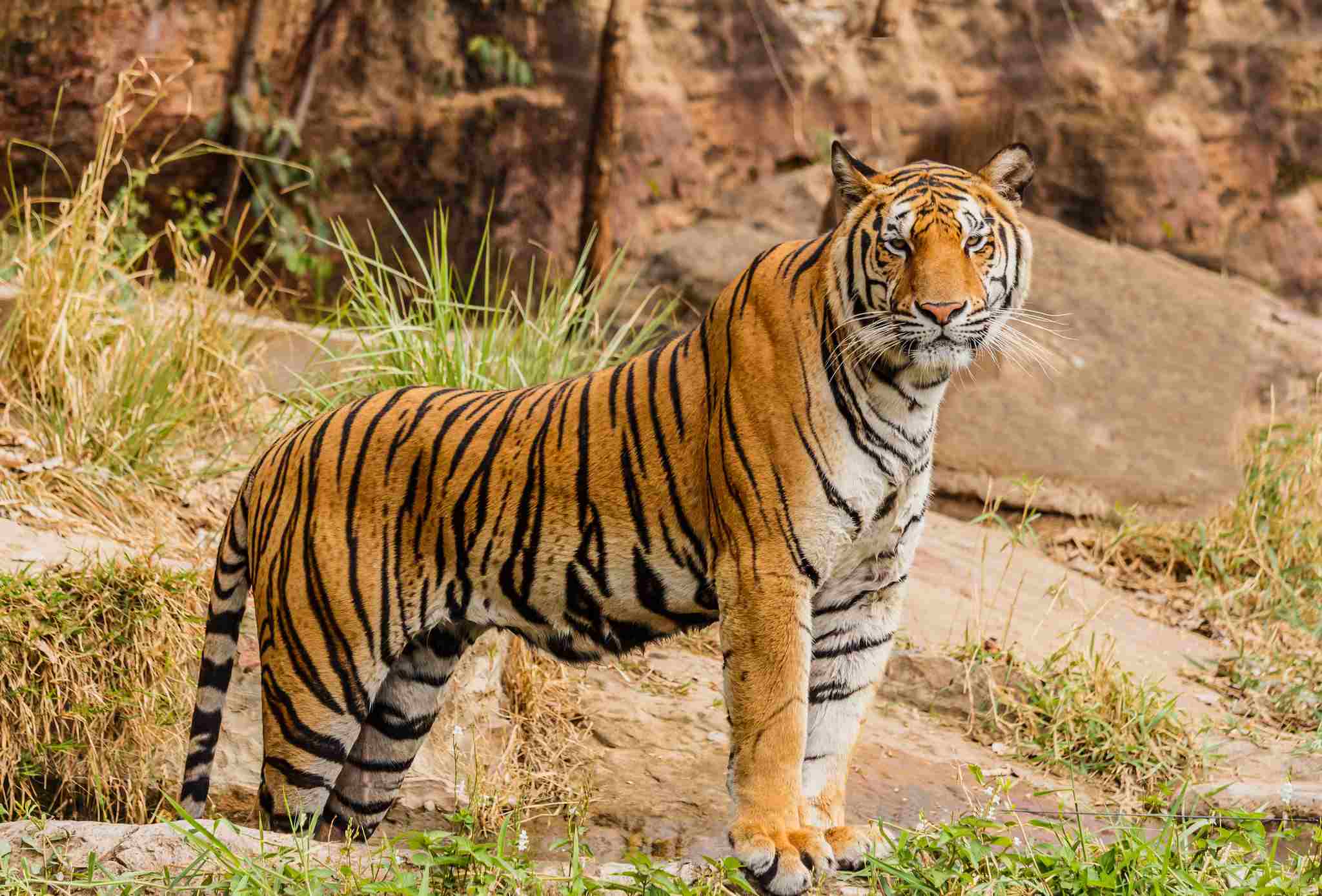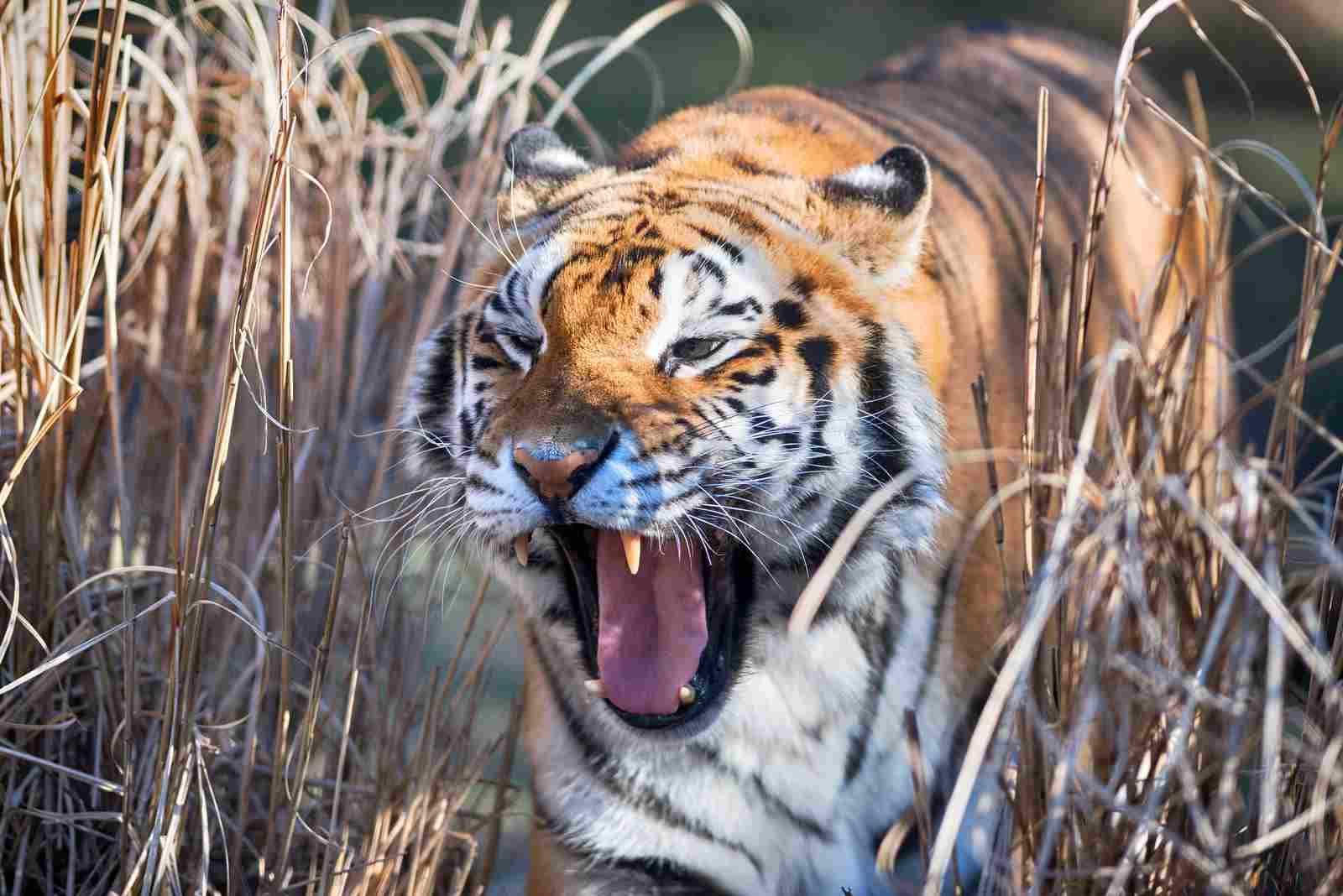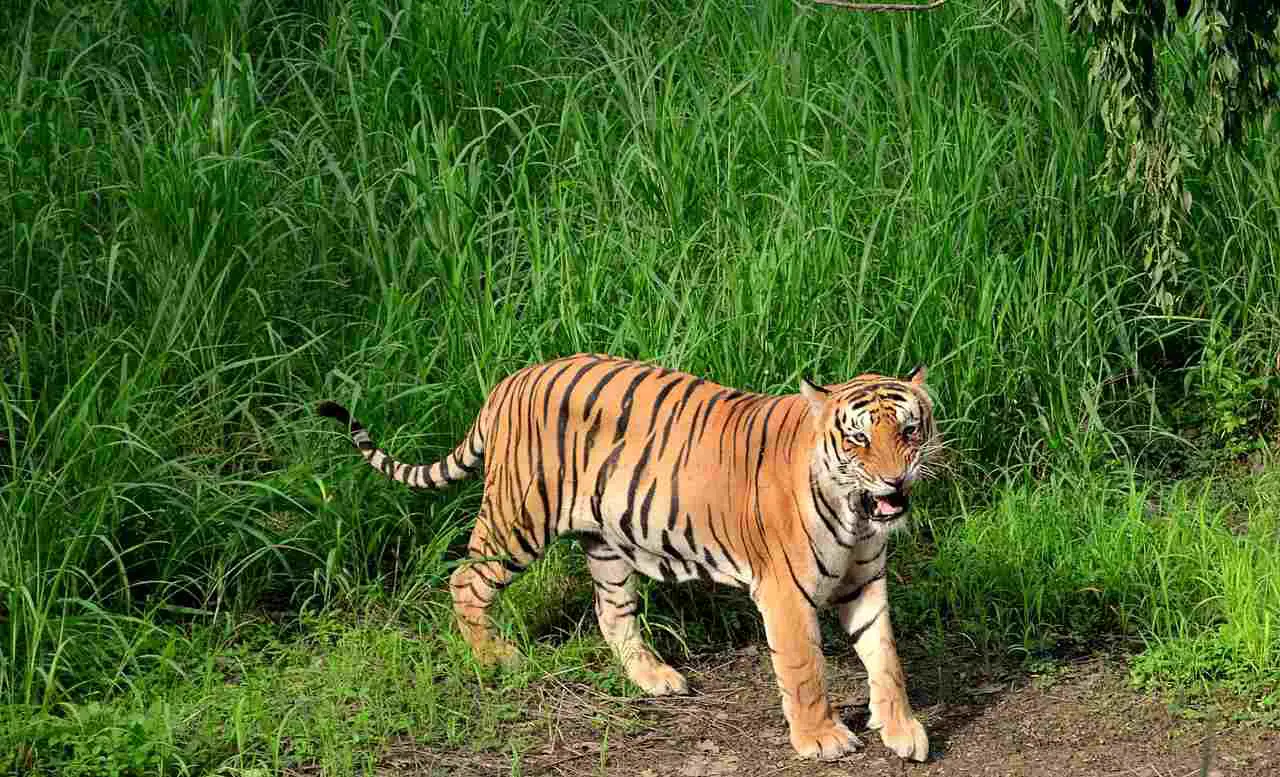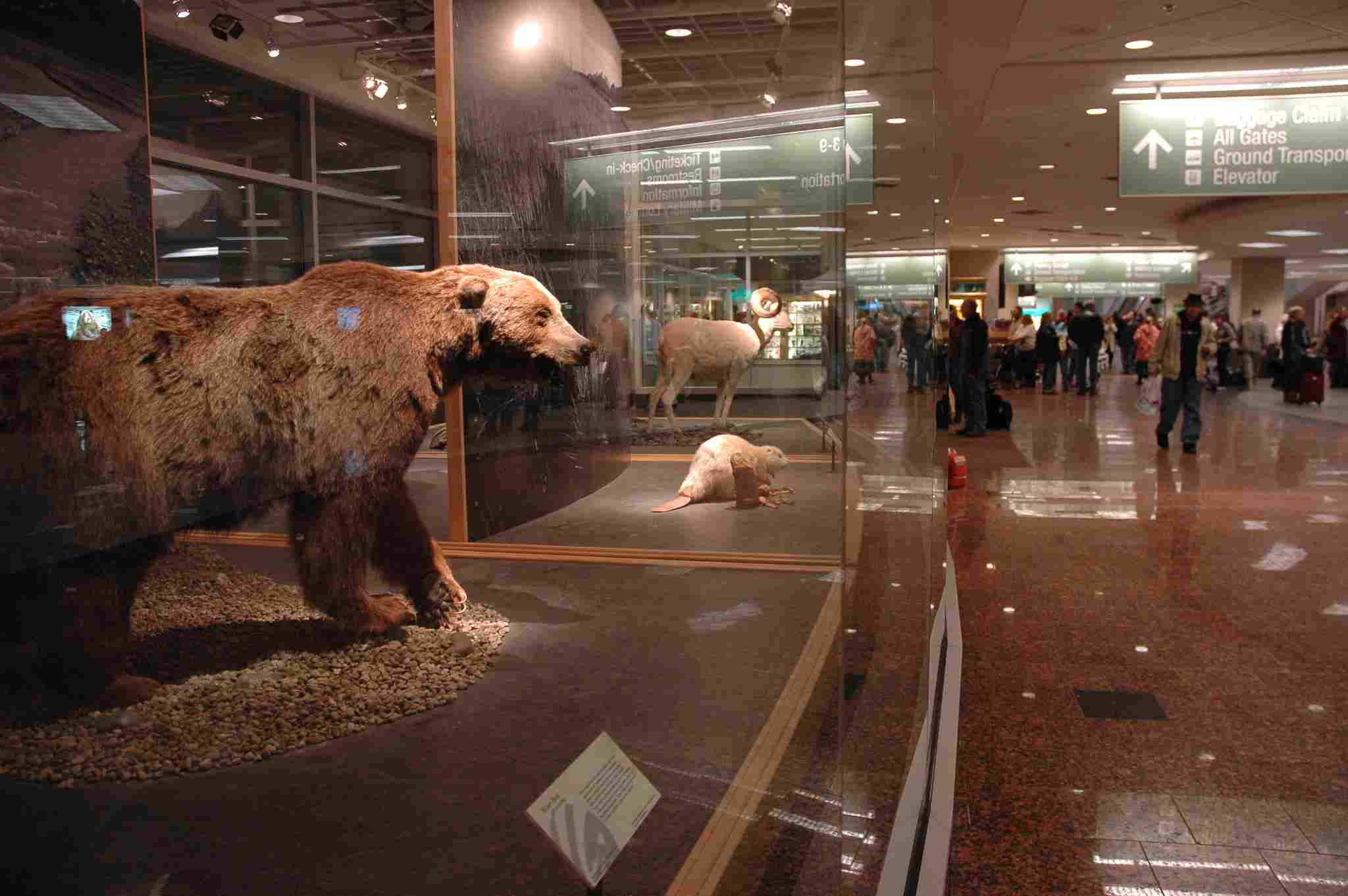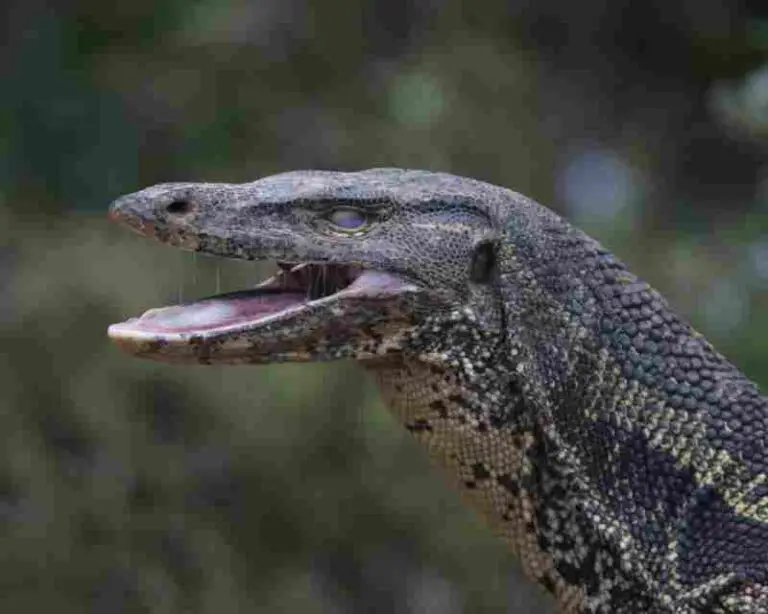Kodiak Bear Vs Tiger Size, Weight, Behavior and Ecology Compared
The outcome of a violent confrontation between a Kodiak bear and a tiger may result in the death of the tiger. However, the actual outcome can vary significantly depending on several factors, as discussed in this article.
By comparing their biological characteristics, size, weight, physical capabilities, habitat, behavior, reproduction, danger posed to humans, and conservation status, we can gain a better understanding of how these two formidable predators stack up against each other.
Key Outcomes
*Biological Comparison
Kodiak bears and tigers, belonging to different biological families, share common traits. Kodiak bears are part of the Ursidae family, while tigers are members of the Felidae family. Despite their distinct lineages, both species have adapted to their environments.
*Size and Weight Comparison
Kodiak bears and tigers differ in size and weight. Kodiak bears can reach heights of up to 5 feet at the shoulders and have a total body length of around 9 feet. They can weigh up to 1,500 pounds. Tigers, on the other hand, are smaller, with shoulder heights of about 3 feet and body lengths of around 6 feet. They weigh between 200 and 600 pounds.
*Physical Capability Comparison
A Kodiak bear will overpower and kill a tiger including Siberian and Bengal species, due to its superior weight, strength, size, and blubber which can serve as a protective layer to minimize damage.
1). Taxonomy
The taxonomy of the Kodiak bear and the tiger reveals interesting insights into their evolutionary history and relationship. The Kodiak bear, scientifically known as Ursus arctos middendorffi, belongs to the genus Ursus and the species arctos. On the other hand, the tiger, scientifically known as Panthera tigris, belongs to the genus Panthera and the species tigris.
Both animals belong to the same family, Ursidae, which includes bears, and the subfamily Pantherinae, which includes big cats. However, they belong to different genera, highlighting their distinct evolutionary paths.
When comparing the animals, it is evident that they have different physical characteristics and adaptations. The Kodiak bear is known for its massive size and strength, while the tiger is renowned for its agility and stealth. These differences in physical attributes are a result of their unique evolutionary paths and ecological niches.
2). Appearance
The appearance of the Kodiak bear and the tiger is distinct and adapted to their respective environments. Starting with their coats, the Kodiak bear has a thick, shaggy fur that helps it withstand the harsh Arctic climate. This fur can range in color from blonde to dark brown, providing effective camouflage in the dense forests and grasslands where it resides. On the other hand, the tiger boasts a beautiful coat with a pattern of dark stripes on a reddish-orange background. This unique coat pattern allows the tiger to blend seamlessly into its natural habitat, the dense jungles and grasslands of Asia.
In terms of stature and build, the Kodiak bear is known for its massive size and robust build. Adult males can reach heights of up to 10 feet when standing on their hind legs and can weigh over 1,500 pounds. In contrast, the tiger is more slender and agile, with males averaging around 9 feet in length and weighing up to 600 pounds. This difference in size and build reflects their distinct ecological roles and hunting strategies.
Generally, while the Kodiak bear’s thick fur and massive size provide insulation and strength, the tiger’s striped coat and agile build enable it to move stealthily through its habitat.
3). Size
When comparing the size of the Kodiak bear and the tiger, we need to consider their total body length and height at the shoulders. The Kodiak bear is known for its massive size, with adult males reaching heights of up to 10 feet when standing on their hind legs. In contrast, tigers are more slender and agile, with males averaging around 9 feet in length.
In terms of height at the shoulders, the Kodiak bear stands at an impressive height, towering over other bear species. Adult males can reach shoulder heights of around 5 feet or more. On the other hand, tigers have a shoulder height of approximately 3 to 3.5 feet.
These differences in size between the Kodiak bear and the tiger are a result of their distinct ecological roles and adaptations. The Kodiak bear’s massive size and height provide it with strength and dominance in its environment, allowing it to forage for food and defend its territory effectively. On the other hand, the tiger’s more compact and agile build enables it to navigate through dense vegetation and hunt its prey with precision.

4). Weight
When comparing the weight of the Kodiak bear and the tiger, it is evident that the Kodiak bear is significantly heavier. Adult male Kodiak bears can weigh up to 1,500 pounds, making them one of the largest bear species in the world. In contrast, tigers are relatively lighter, with adult males weighing around 400 to 600 pounds.
The substantial weight of the Kodiak bear is a result of its adaptation to its environment. These bears inhabit the Kodiak Archipelago in Alaska, where they have access to abundant food sources such as salmon and berries. Their large size and weight provide them with the necessary strength to catch and overpower their prey, as well as to defend themselves against potential threats.
On the other hand, tigers have a more slender build, which allows them to be agile and swift in their movements. Their lighter weight enables them to navigate through dense forests and pursue their prey with precision. Tigers primarily hunt large ungulates such as deer and wild boar, and their weight is optimized for their hunting strategies.
5). Bite Force
When comparing the bite force of the Kodiak bear and the tiger, it is important to consider the unique adaptations of each species. The Kodiak bear possesses an incredibly powerful bite, with an estimated bite force of up to 1,200 pounds per square inch (psi). This immense bite force allows the bear to effortlessly crush bones and tear through tough hides, making it a formidable predator.
On the other hand, tigers also possess a strong bite, although not as powerful as that of the Kodiak bear. Tigers have an estimated bite force of around 1,000 psi. While slightly lower than the Kodiak bear, this bite force is still more than sufficient for the tiger to subdue and kill its prey.
The difference in bite force between the two animals can be attributed to their respective diets and hunting strategies. The Kodiak bear’s diet consists of a wide range of food sources, including fish, berries, and other animals. Its powerful bite allows it to efficiently consume these varied food items. Tigers, on the other hand, primarily hunt large ungulates, such as deer and wild boar. Their bite force is optimized for gripping and suffocating their prey during the hunt.
6). Overall Physical Capacity
When comparing the overall physical capacity of the Kodiak bear and the tiger, it is evident that the Kodiak bear possesses superior strength and power. This strength is a result of several factors that we have evaluated and compared.
Firstly, the Kodiak bear’s sheer size and weight give it a significant advantage over the tiger. With adult males weighing up to 1,500 pounds and standing over 10 feet tall, the Kodiak bear is one of the largest land predators in the world. In contrast, tigers typically weigh between 200 to 600 pounds, depending on the subspecies.
Secondly, the Kodiak bear’s muscular build and bone structure contribute to its overall physical prowess. Its robust limbs and powerful shoulders enable it to exert immense force, making it capable of overpowering prey and defending itself against potential threats.
Furthermore, the Kodiak bear’s adaptations for survival in its environment, such as its thick fur and layers of fat, provide it with additional protection and insulation. This allows the bear to withstand extreme temperatures and harsh conditions, further enhancing its physical capacity.
In a violent confrontation between the Kodiak bear and the tiger, it is highly likely that the bear’s superior physical capacity would result in the tiger’s demise. The bear’s strength, size, and adaptations make it a formidable opponent, capable of overpowering the tiger and causing fatal injuries.
7). Habitat
The Kodiak bear is primarily found in the Kodiak Archipelago in southwestern Alaska. This region is characterized by dense forests, rugged mountains, and abundant water sources. The bear’s habitat consists of a variety of ecosystems, including coastal areas, wetlands, and alpine meadows. This diverse habitat provides the bear with ample opportunities for foraging, mating, and denning.
On the other hand, tigers inhabit a wide range of habitats across Asia, including forests, grasslands, and mangrove swamps. They are found in countries such as India, Russia, and Indonesia. Tigers are highly adaptable and can thrive in various environments, from the snowy landscapes of Siberia to the hot and humid jungles of India. This adaptability allows them to exploit different prey species and maximize their chances of survival.
When comparing the habitats of these two apex predators, it is clear that the Kodiak bear’s habitat is more limited in terms of geographic range. However, the bear’s habitat offers a rich and diverse ecosystem that supports its large size and dietary needs. In contrast, tigers have a wider geographic range but must adapt to different habitats to ensure their survival.
8). Lifespan
When comparing the lifespan of Kodiak bears and tigers, it is important to consider various factors that can influence their longevity.
Kodiak bears have an average lifespan of around 20 to 25 years in the wild. However, some individuals have been known to live up to 30 years or more. Factors such as food availability, habitat quality, and competition for resources can impact the lifespan of Kodiak bears. Additionally, the presence of human activities, such as hunting and habitat destruction, can also affect their survival rates.
On the other hand, tigers generally have a shorter lifespan compared to Kodiak bears. In the wild, tigers typically live for about 10 to 15 years. However, in captivity, where they are protected from natural threats and have access to regular veterinary care, tigers can live up to 20 years or more. Similar to Kodiak bears, the lifespan of tigers can be influenced by factors such as food availability, habitat loss, and human-wildlife conflict.
9). Behavior
Feeding behavior is an essential aspect to consider. Kodiak bears are omnivorous, meaning they have a varied diet that includes both plants and animals. They are opportunistic feeders, foraging for berries, nuts, fish, and small mammals. Tigers, on the other hand, are carnivorous predators. They primarily hunt large ungulates such as deer and wild boar, using their stealth and strength to ambush their prey.
Aggression is another behavior that differs between the two species. While both Kodiak bears and tigers can be aggressive when provoked or threatened, tigers are generally more territorial and aggressive towards other tigers. Kodiak bears, on the other hand, are less territorial and tend to be more tolerant of other bears in their vicinity.
Social behavior also varies between the two species. Kodiak bears are mostly solitary animals, except during the mating season or when a mother is raising her cubs. Tigers, on the other hand, are solitary animals as well, but they have larger home ranges and may overlap with the territories of other tigers.
Parenting behavior is another interesting aspect to compare. Female Kodiak bears are protective and nurturing towards their cubs, teaching them essential survival skills. Female tigers also exhibit similar behavior, raising their cubs until they are old enough to fend for themselves.
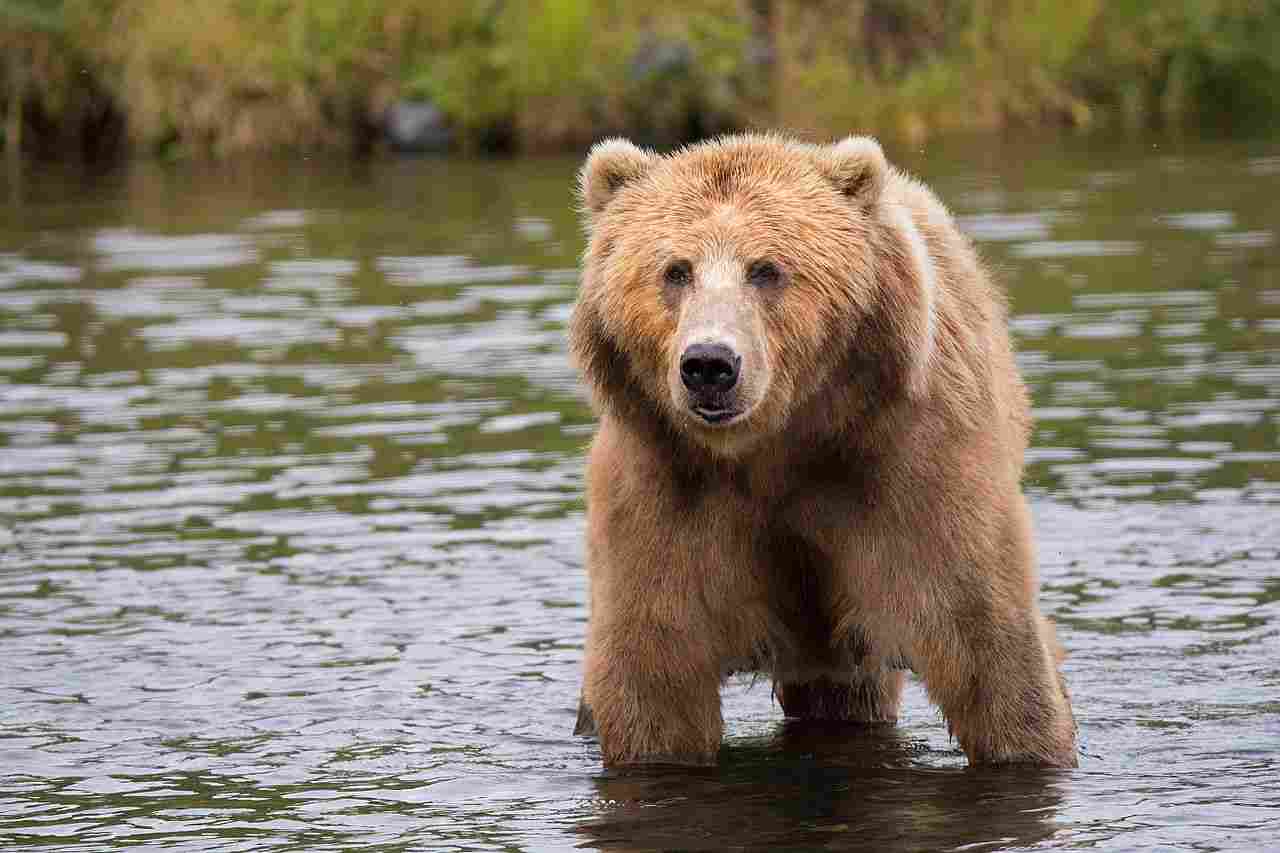
10). Reproduction
When it comes to reproduction, Kodiak bears and tigers have distinct differences. Kodiak bears are viviparous, meaning they give birth to live young. Female bears go through a gestation period of about 220 to 250 days before giving birth to one to four cubs. The cubs are born blind and helpless, relying on their mother for nourishment and protection.
On the other hand, tigers are also viviparous, giving birth to live cubs. The gestation period for tigers is around 100 to 110 days, and a female tiger typically gives birth to a litter of two to four cubs. The cubs are born with their eyes closed and are dependent on their mother for survival.
In terms of reproduction, both species have similarities in being viviparous and giving birth to live young. However, there are differences in the gestation period and litter size. Kodiak bears have a longer gestation period and can give birth to a larger number of cubs compared to tigers.
11). Danger Posed to Humans
When it comes to the danger posed to humans, both Kodiak bears and tigers have the potential to be dangerous, but their behavior towards humans differs. Kodiak bears are known to come close to human settlements, especially if there is a presence of food sources. While they are generally not aggressive towards humans, they can become defensive if they feel threatened or if their cubs are in danger. It is important for humans to take precautions when encountering a Kodiak bear, such as maintaining a safe distance and avoiding any sudden movements.
On the other hand, tigers have a reputation for being more aggressive towards humans, than Kodiak bears. They are known to be solitary animals and tend to avoid human settlements. However, if a tiger feels threatened or if it is unable to find its natural prey, it may resort to attacking humans. The rate of human deaths caused by tigers is higher compared to Kodiak bears.
If you encounter either a Kodiak bear or a tiger, it is crucial to remain calm and avoid direct eye contact. Backing away slowly without turning your back is recommended. It is also important to make yourself appear larger by raising your arms and speaking loudly. Carrying bear spray or other deterrents can also be helpful in deterring an aggressive bear or tiger.
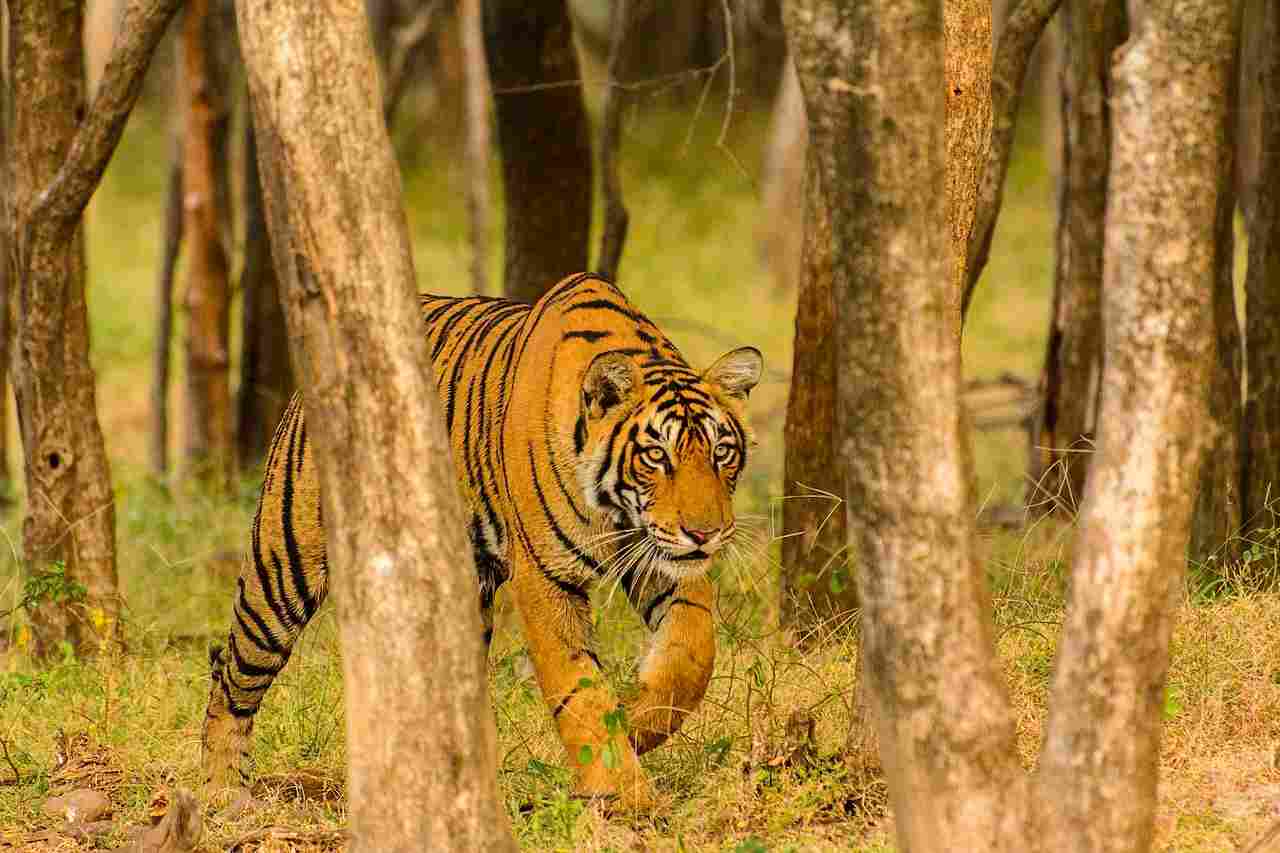
12). Conservation Status
The conservation status of Kodiak bears and tigers is a crucial aspect to consider, as both species face significant challenges, and are classified as endangered or threatened.
For Kodiak bears, the main threats to their survival in the wild include habitat loss, climate change, and human activities such as hunting and poaching. The destruction of their natural habitat, particularly due to logging and urban development, has resulted in a decline in their population. Additionally, climate change has led to the reduction of food sources, impacting the bears’ ability to find sufficient nourishment. Conservation efforts focus on protecting their habitats, implementing stricter hunting regulations, and raising awareness about the importance of coexisting with these animals.
Tigers, on the other hand, face similar threats to their survival. Habitat loss and fragmentation, primarily caused by deforestation and human encroachment, have significantly impacted tiger populations. Illegal hunting and poaching for their valuable body parts also pose a severe threat. Conservation initiatives for tigers involve establishing protected areas, implementing anti-poaching measures, and promoting sustainable land use practices.
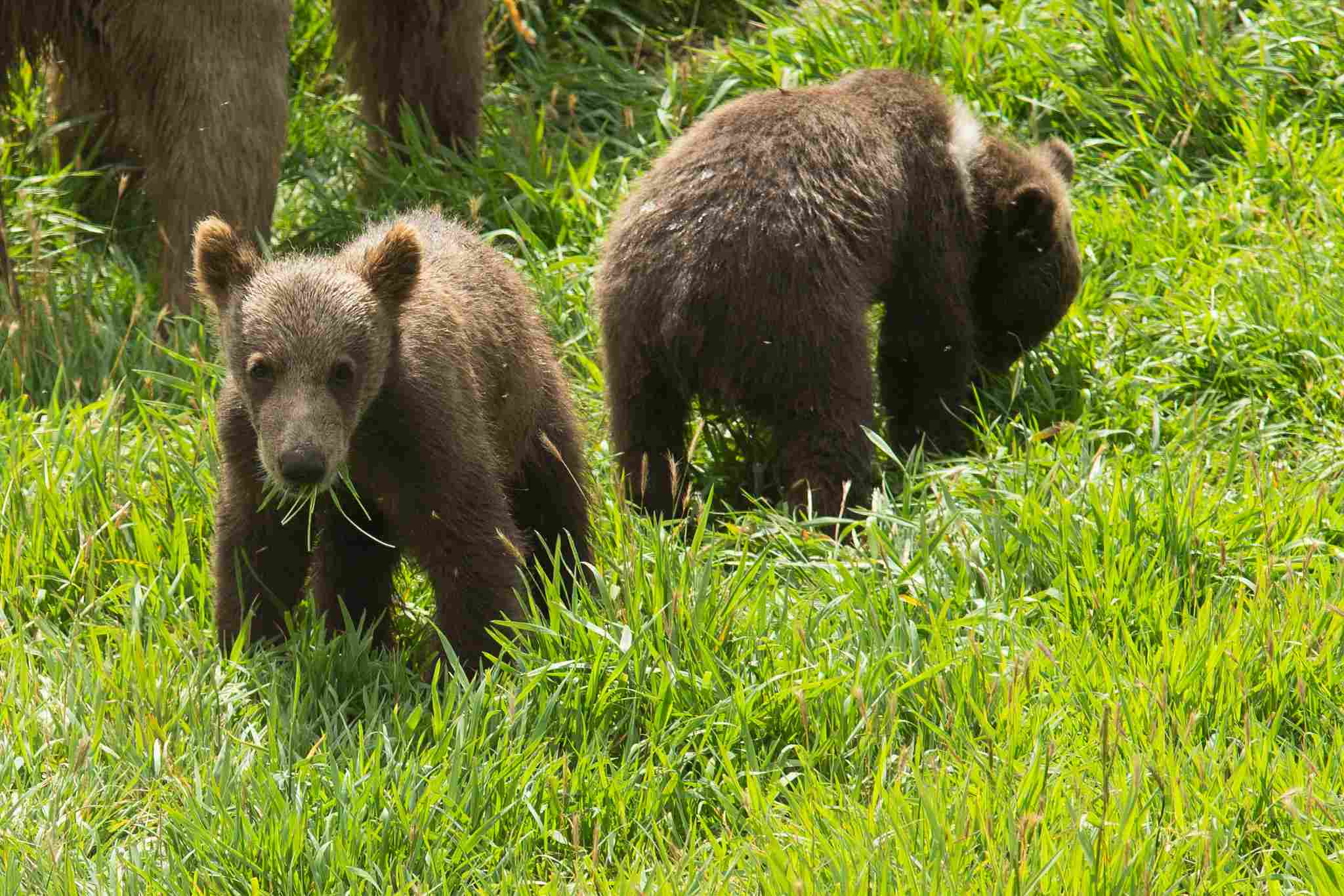
Kodiak Bear Vs Siberian Tiger
a). Taxonomic Classification
The taxonomic classification of the Kodiak bear and Siberian tiger is based on their genus and species. The Kodiak bear belongs to the genus Ursus and the species arctos middendorffi, while the Siberian tiger belongs to the genus Panthera and the species tigris altaica.
These classifications highlight the distinct evolutionary paths and genetic makeup of these animals.
b). Appearance
The appearance of the Kodiak bear and Siberian tiger is distinct and well-adapted to their respective environments. The Kodiak bear has a thick coat of fur that provides insulation and protection, while the Siberian tiger has a striped pattern on its skin that helps with camouflage. In terms of stature and build, the Kodiak bear is larger and more robust, while the Siberian tiger is sleek and agile.
c). Size and Weight Comparison
When comparing the Kodiak bear and Siberian tiger, their size and weight play a significant role. The Kodiak bear is known for its massive size, with adult males weighing up to 1,500 pounds and standing over 10 feet tall.
In contrast, the Siberian tiger is smaller, with males weighing around 500 pounds and measuring up to 10 feet in length. The stark difference in size and weight between these two animals contributes to their distinct physical capabilities and hunting strategies.
d). Physical Capability
When comparing the physical capabilities of the Kodiak bear and Siberian tiger, their size and weight are key factors to consider. The Kodiak bear’s massive size and weight give it a significant advantage in terms of strength and power. With its sheer size, the bear possesses the ability to overpower the tiger in a violent confrontation.
However, the Siberian tiger compensates for its smaller size with agility, speed, and sharp claws. These attributes enable the tiger to be a formidable predator, capable of taking down large prey.
Kodiak Bear Vs Bengal Tiger
a). Taxonomic Classification
The taxonomic classification of the Kodiak bear and the Bengal tiger provides insight into their relationship. The Kodiak bear, scientifically known as Ursus arctos middendorffi, belongs to the genus Ursus. This places it in the same category as other bear species such as the grizzly bear and the polar bear. On the other hand, the Bengal tiger, scientifically known as Panthera tigris tigris, belongs to the genus Panthera, which includes other big cat species like lions and leopards.
b). Appearance
The appearance of the Kodiak bear and the Bengal tiger is distinct and unique. The Kodiak bear is known for its large size and muscular build, with a thick fur coat that can range in color from blonde to dark brown. On the other hand, the Bengal tiger is characterized by its orange coat with black stripes, which helps it blend into its natural habitat.
c). Size and Weight Comparison
When comparing the Kodiak bear and the Bengal tiger, one of the key factors to consider is their size and weight. The Kodiak bear is known to be one of the largest bear species in the world, with adult males weighing between 900 to 1,500 pounds and measuring up to 10 feet in length. On the other hand, the Bengal tiger is a large and powerful predator, with adult males weighing between 400 to 550 pounds and measuring around 9 feet in length.
d). Physical Capability
The Kodiak bear, being one of the largest bear species in the world, possesses immense strength and power. With adult males weighing between 900 to 1,500 pounds, the Kodiak bear has a clear advantage over the Bengal tiger in terms of sheer size and weight. This gives the bear the ability to overpower its opponents with ease.
On the other hand, the Bengal tiger, although smaller in size compared to the Kodiak bear, is a formidable predator as well. With adult males weighing between 400 to 550 pounds, the tiger possesses agility, speed, and a set of sharp claws and teeth that make it a formidable opponent. Its muscular build and hunting prowess allow it to take down prey efficiently.
In a violent confrontation between these two animals, the Kodiak bear’s size and strength would likely give it the upper hand. However, it is important to note that the outcome of such encounters can be unpredictable, as factors such as the environment, individual temperament, and fighting experience can also influence the outcome.
Conclusion
I). SIMILARITIES
Despite their differences, Kodiak bears and tigers share some similarities in terms of their conservation status and the threats they face. Both species are classified as endangered or threatened, highlighting the urgent need for conservation efforts.
Habitat loss, primarily due to human activities such as deforestation and urban development, poses a significant threat to both animals. Additionally, illegal hunting and poaching for valuable body parts are severe challenges for both species.
Conservation measures for both Kodiak bears and tigers focus on protecting their habitats, implementing anti-poaching measures, and promoting sustainable land use practices.
II). DIFFERENCES
While Kodiak bears and tigers have similarities, there are also notable differences between them. One key difference is their physical characteristics, with Kodiak bears being larger and heavier than tigers.
Another difference lies in their habitats, with Kodiak bears primarily found in the coastal regions of Alaska, while tigers inhabit various ecosystems across Asia. Additionally, their behaviors and reproductive strategies differ, with Kodiak bears being solitary and tigers being more social animals.
